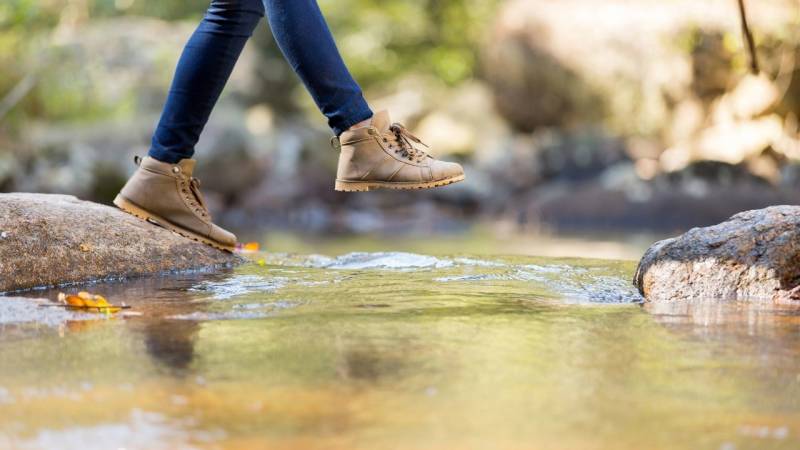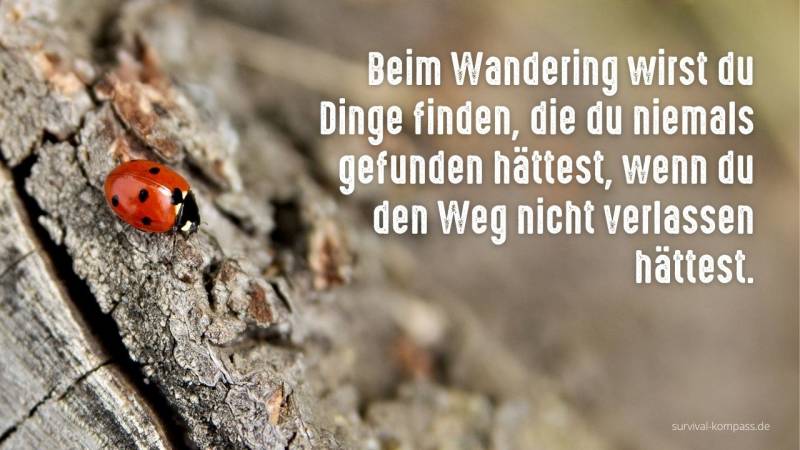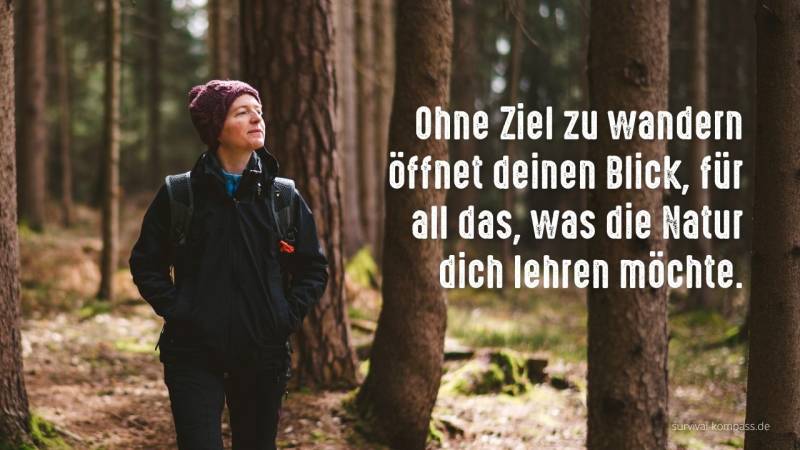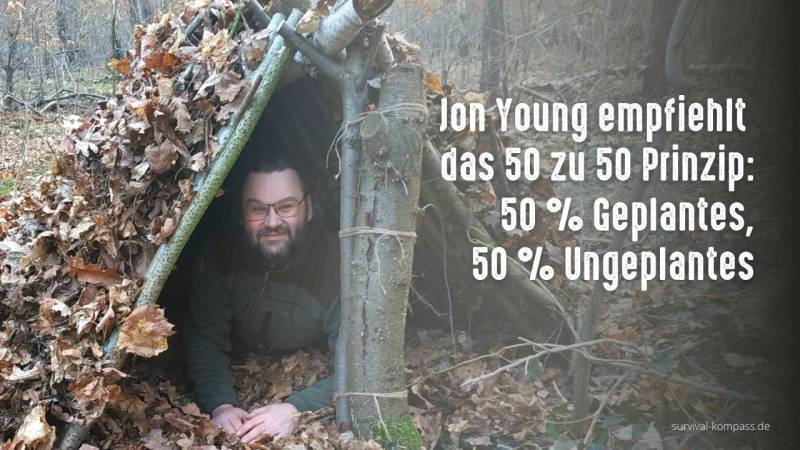Wandering: Why aimlessness connects you more with nature
Learning twice as much through unplanned time and at the same time sharpening the senses? With the core routine of wandering, this is possible.


From Tanja .
👉 The key facts from this guide
- Discover Wandering, a core routine of wilderness education that deepens your connection to nature and sharpens your senses.
- Learn to let your intuition and curiosity guide you to gain emotional strength and experience adventures.
- Realize that aimless wandering breaks your habitual patterns and opens you up to nature and its teachings.
- Develop an inner attitude of mindfulness, deceleration, and lightness in your life through Wandering.
- Try the 50/50 principle: 50% planned activities and 50% unplanned activities in your time outdoors.
- Use these 5 tips for your Wandering routine: map and compass, timer, avoid distractions, write down thoughts, and leave trails where allowed.
What if you could learn twice as much and sharpen your senses through unplanned time?
Imagine letting your intuition guide you without knowing where it leads, and by doing so, you gain emotional strength.
In addition, your connection to nature deepens even further.
And you observe animals and experience adventures.
Exactly that is possible, and I want to tell you today how you can achieve it.
Core routine of wilderness education: The Wandering
The Wandering consists of going out and letting yourself be guided by your intuition and curiosity.
You let your curiosity lead the way and follow it. Just like children show us. It is a habit that helps you let go of habits.
Now you may be wondering if I'm serious about this.
Yes, this is meant seriously.
Next to the seating area (read here what the seating area is), today I will give you one of the most important tools you need if you want to truly immerse yourself.
Not only your connection to nature, but all areas of your life will be positively influenced.
Hiking means learning
The core routine of wandering doesn't sound like a teaching method at all to us, modern humans at first.
Doing something without forcing a result, without an immediately apparent benefit, and without a plan is something that may even seem foreign to us at first.
We are accustomed to clear processes, tasks, and curricula. In a certain way, our lives are timed, guided by the clock and often by the goals we set for ourselves.
Even what we call leisure is typically equipped with a specific goal.
Don't get me wrong: It is essential for us humans to have goals and be focused. But like everything in life, it also requires a balance.
When focusing on something, on a result, or on a goal, we miss out on a lot.
All that happens around us. The little wonders of life.
We are then deaf to the small inner voice that may invite you to take an entirely different path today.
The one that tells you that it's exciting to crawl on all fours through the forest or leads you to places you've never seen before, even though you've been in this forest many times.

You will inevitably find things that you would never have found if you had not strayed from the path.
I have already found mysterious animal skulls, strange mushrooms, and exciting tracks. I would have missed all of that if I had always stayed on the predetermined path.
If you embark on the wandering, unexpected things happen, great encounters and amazing stories.
Just these kinds of stories that we all love to listen to because they carry something philosophical and deeply touching within them. Stories that weave an invisible bond between you and your surroundings. You truly become at home.
What can be less empty in a child's eyes than an undeveloped "empty" plot of land?... A streambed, a field full of weeds, or an undeveloped plot of land… are places of initiation, where the boundaries between ourselves and other creatures blur, where the earth settles under our fingernails and a sense of place settles under our skin. – Robert Michael Pyle - "Vacant Lot" The Thunder Tree
Wandering aimlessly feels like a potion for your brain patterns
Wandering aimlessly, when done regularly, breaks old habit patterns.
The creates the very best condition to connect with nature as a human being, according to your gifts and abilities.
You learn to trust yourself and your curiosity, your intuition, and your rhythm.
Without a goal to wander, opens your view, for all that nature wants to teach you.

It opens your ears to sounds (like bird sounds), which you usually overlook, and it makes you more mindful and slower. Because those who have no goal do not hurry.
There is nothing to process, nothing to complete, and nothing to achieve.
In his essay "An Entrance to the Woods," Wendell Kerry wrote:
"The faster one moves, the more strained the senses are, the more they miss, the more confusion they have to endure or beautify - and the longer it takes for the mind to pause in the presence of anything."
So, you create the perfect opportunity for your brain to permanently anchor all the positive effects.
Indeed, you can thus increasingly decelerate, become more mindful in your everyday life, and take things a bit more lightly. You develop a good sense of your limits and more ease enters your life.
It creates much more than a new habit, it creates an inner attitude.
5 Tips for Your Wandering Routine
If you're afraid of getting lost, I want to encourage you to carry a map and compass with you and learn how to use both. In the guide "How to Use a Compass with a Map?" you will find all the information you need.
Jon Young recommends the 50/50 principle. This means that you allocate and keep half of your time for unplanned hiking outdoors.

You can also set a timer at the beginning. I also apply the 50/50 principle in my courses and often think how nice it would be to incorporate this 50% unplanned outdoor time in school.
If you don't follow a curriculum, curiosity takes over and guides the learning process. As a mentor or teacher, you take on the role of the exploring colleague and co-questioner (see also my article on Coyote Teaching)
While you're wandering around, you should ignore all distractions. You should turn off your phone or at least put it on silent.
If your mind is still full and your thoughts prevent you from fully engaging, write down everything that comes to your mind before you set off. This method has generally proven effective for me.
- Try not to let your knowledge guide you, but really let your intuition guide you. For example, if you are standing at a fork in the road, close your eyes for a moment and feel into your body. Which arm feels heavier, or maybe even tingles a little?
- Find out where you are allowed to deviate from the paths in your surroundings. In some nature reserves or national parks, this is not allowed.
Finally, I would like to give you something very important to take with you.
Do not believe in your belief statement "That brings nothing" for a single second.
The belief is unfortunately deeply rooted in us that simple things that do not have a specific goal do not have any benefit.
Actually, they often have an invaluable benefit for us.
I would like to invite you to give it a try.
Find out where it draws you, what there is to discover and reconnect with your nature.
Have fun with your adventures and stories.
And if you want to discover more routines and ideas, then read: 33 Tips for More Nature Connectedness - How to Strengthen Your Connection with Nature.
Was this guide helpful?
14 people found this guide helpful.
5.00 out of 5 points (14 Ratings)
Comments (0)
This post may contain affiliate links. So if you click on the links and make a purchase, I will receive a small commission at no additional cost to you. Click here, to learn more about it.



